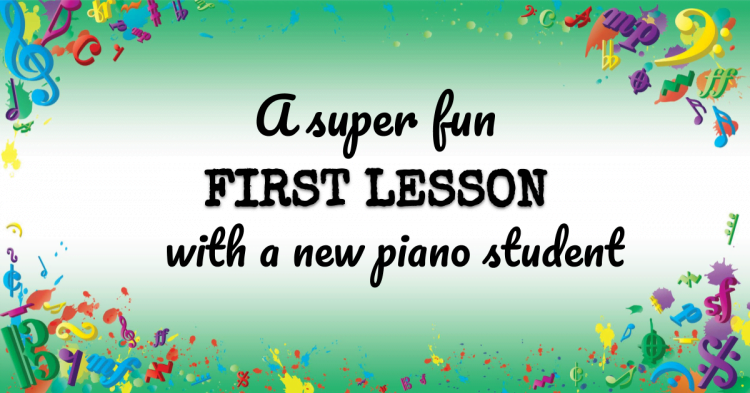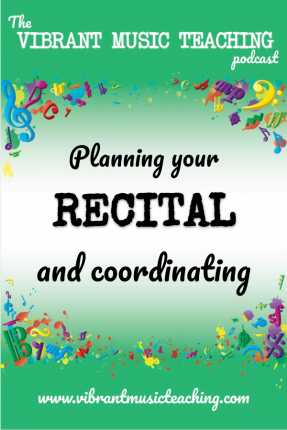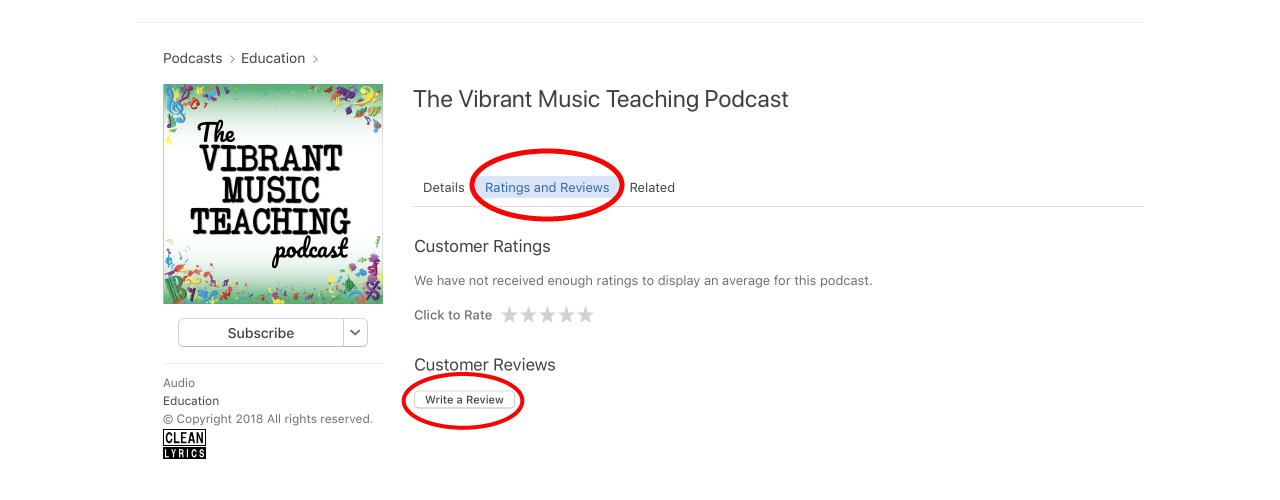In this episode, I’ll share the activities I do at a first lesson with a new piano student including games and improvisation. Listen in to find out more!

Relevant Resources
FULL TRANSCRIPT
Click on any word to jump to that point in the audio. 🙂
VMT 034 – A super fun first lesson with a new piano student_DELIVERABLE.mp3 (transcribed by Sonix)
Vibrant vibrant vibrant music teaching proven and practical tips strategies than ideas for music teachers
This is episode 34 of the vibrant music teaching podcast. I’m Nicola Cantan and today I want to share with you a first lesson from my piano power booster one course
Welcome beautiful teachers. So today’s episode of the podcast is a little bit different. Welcome back if you’ve been with me before and welcome. If it’s your first time here today I’m going to be sharing with you a first lesson from my piano power booster one course which was just released recently inside the vibrant music teaching site. This course takes you through 40 weeks of lessons with a new beginner piano student of age about seven or eight. Average age beginner and up so some students in my studio and the studio of members of music teaching if they start is a preschooler they would start in tiny finger take off which is another course. Another set of 40 weeks of lesson plans. And then they would transition into this. But if there is a starting at around age 7 or over they would usually start directly in this program. Now what the piano power booster is is is a way to teach all the stuff that you need to include that isn’t just pieces. This is one of my but the pieces plans. They’re exactly what they sound like. Each plan will take around 20 minutes. It’s a jam packed 20 minutes though so you could easily stretch it half an hour if you wanted to. But it’s designed to be used alongside a method book a set of classical repertoire or rope pieces whatever you like whatever you want to use. This is all the other stuff. It’s the oral work. It’s the rhythm work. It’s technique and its theory.
So by laying out all of these other skills using improvisation games and other interactive and fun activities for students I’m helping you to create well-rounded musicians in your studio. Students who cannot only play music that’s written in front of them but can improvise and feel free doing that who play with great technique who have amazing rhythmic foundations that carry them through all of their studies. So it’s about keeping everything in mind the whole way through their progression and not just allowing a method book or an exam system or anything like that to take over having more thought about what we’re teaching and what we’re teaching it and getting more creative getting them off the bench more and making it more enjoyable as well. So the piano power goes to one is the first year of lessons with most students and each week is about 20 minutes. Today I’m going to share with you just the first lesson. These are actually videos inside vibrant music teaching. So if you’re a member you may prefer to watch the video version that’s inside the video library. But you’re welcome to keep listening here too if you prefer. I will occasionally gesture to things or be talking about things that are in front of me but I’m pretty sure you’ll still be able to follow what I’m saying. The examples that I’m giving throughout the lesson. So without further ado let me share with you this first lesson from the piano power booster one
Well hello there and welcome to lesson one of piano power booster 1. This might be your students very first lesson. So the most important thing today is to have some fun with them and start to build your rapport. And we’re going to do that through a few different activities. The first thing we’re going to do is work on the warm up routine as I call it which is really a way to get their shoulders relax their arms relax and get them to feel their arm weight. So what we do is stand up facing each other and then we swing our arms around. You’ll be standing up I’m sitting down because I’ll be out of the video swing rounds around. It’s sometimes called knocking on heaven’s door this motion and then that’s just to loosen up the arms and lift them up and let them fall down by your side. You get about three times and you’re ready to go to the piano. The reason I do this as I say is to get them to loosen up their arms and to feel the weight of them so that they can play
Into the Keys dropping into the Keys rather than forcing right. Some students will do. And also so that we can relieve any tension any tension at all.
So that’s the first thing we’ll do then we’ll go to the piano and talk about good piano posture how to sit head to position the bench where to put your foot stool and all of that stuff. And that’s when I introduce my friend Steve here. Steve is my little technique assistant if you haven’t met him before and Steve comes down whenever there’s a problem with technique and posture. Steve is my alter ego and he does the jobs. I might not want to do like Maggie my student about their round head shape. So Steve will just come down and put his little claw underneath there. Students love him. They find him really funny. He loves to sit on people’s heads to check their posture and all of that kind of stuff. So that’s what we’ll be doing the state introducing piano posture and Steve so that they get used to Steve the stickler and how he works from there we’ll talk about the keyboard geography and how there are groups of two and three Black Keys and the dogs and Gates are really useful tool for this. So I’ll get my student to place the dogs on the two black keys and the gates on the three black keys just to make sure that they can find all of those patterns.
You’d be surprised even older beginners might not see that straightaway or might not be able to point it out immediately. But once they do that activity it’s all clear you’re all on the same page. That’s how those piano is structured and that’s how we find our way around. Once the dogs and Gates are laid out you can get a student to play all the gates and then you can take them away. Get them to play the groups of black kids and all the days again so that they’re finding those in the middle of the two black keys. That is the easiest key. By the way to find if you haven’t realized that already the two the ones in the middle of the three black keys can be confused with each other. The sides of either can be confused with each other but there’s no question D in the middle of the two black keys so is easiest to find to start out with. And I always start with him. Once you’ve done that and your student is starting to find their way around the piano. I would do some oral training and this is a great chance to get your student up and moving again and keep those wiggles out of their system.
For this we use the oral paddles. Now in this lesson I’ve suggested use high and low and then loud and soft. However what I have on hand here is same with different. I hope you’ll excuse that. So what we do is give our student a matching pair one in each hand and then we play something and they need to hold up the correct one. Really that simple. You could just ask them to answer but it’s way more fun if they have something to hold up and it just helps to make the whole thing into a game. So you play a high sound or a low sound and see if they can identify what it is. Then switch to loud and soft and do the same thing. Make sure you mix up those two things. Do low sounds that are soft and high sounds that are allowed to make sure that they can tell the difference between those two concepts because some students get those confused. Next we’re going to just check in with their sense of beat. So what we’re going to do here is we’re going to play the music in this case and they’re going to beat to the beat.
So I’d ask them to tap along with me while I play and then just start something simple Just and see if they can stay with that if they can.
Great move to just some dotted rhythms or something. Try to strip them off a little bit if they’re really good at it. If they can’t start tapping your foot while you do it and encourage them to follow your foot. If they still can’t follow you take off one hand and use that to tap. So you’re doing the exact same thing as them. If they still can’t follow you make a mental note. If a student needs some serious work on feeling the beat and you want to start every lesson from here on out with some beat work. If if that’s the case because it just it will need so much reinforcement if they’ve got no sense of it. Even with those basic activities if they’re say over the age of 6 or 7. Now the last activity today is some improv and this is again to work on keyboard geography. I’ve given you a pattern here that you can use. You don’t have to use it. You can use any chord progression you like. I’m just giving you samples throughout this but the pieces plan so that you feel comfortable. If you’re a person who gets terrified when there’s no book and tried to be right and you could find all of these at the end of the PDF if in one neatly laid out this is horizontal vertical package.
So this one just go.
Do you recognize it. So it’s actually kind of an indie I borrowed a little bit here but I’ve turned it into a wealth because no real reason except that I like to vary the time signature a lot to write these kinds of exercises so that they’re hearing music specially in triple meter because that does not exist on the radio in case you haven’t noticed it’s been banished from pop music so introducing Triple meter is really important so that when they get to that in classical pieces they have some sense of what it is and they have it in their ear. So I just do it in little ways like this exercise right here while we’re playing this lovely Cannon waltz.
They are going to be playing making as interesting music as I can using only these. That’s their challenge. It’s a little challenge for them. The point is they’re going to have to do really interesting rhythm patterns to try and make it sound good. They news any day
Etc. It’s really just about finding D. But it also introduces the idea that improv should sound good it’s not just play whatever you want but you should be listening actively listening the whole time trying to make interesting music and really that there is no wrong answer. You sure try and play only Ds but even if they play are on note and they look at you like deer in the headlights just keep going same, no matter you go on there’s no wrong notes at all and this will just get them used to finding the Ds and get them used to the idea of improvising and having some fun together at the piano. So that’s it for less than one. I’ll see you back here for lesson 2
Okay. I really hope you enjoyed that sample from my piano power booster one course that is as I said the first lesson of 42 weeks. And so those 40 weeks of planned. It comes with a fully laid out book of all the lesson plans with space for you to write notes and with bullet points short to the point directions of what you need to do. And of course as a video for each one so that you can hear me talk about it and explain why we’re doing what we’re doing and see me demonstrating the activities when they’re needed as well. So I hope that gave you an insight into what this course is all about and why you might want it. If you’re not a member yet you can sign up at a VMT.ninja and you’ll get instant access to that course and tons of other fantastic resources like the tiny finger take off which I mentioned earlier which is for preschoolers it’s like the preschool version of this and you’ll get access to tons of other courses like the chord crash course the circle of friends odyssey. All of these different sets of plans as well as the full games and improvisation activity library which is massive at this stage is full of all sorts of things for teaching every theory topic you could possibly imagine and you’ll get the support of the community and access to me once a month on the officers as well. So it’s a great deal you can sign up but VMT.ninja to take advantage of all that I have to offer inside vibrant music teaching. That’s it for today I hope you enjoyed this quick sample from the piano power booster one and I’ll catch you again next week on another episode of the vibrant music teaching podcast
Vibrant music teaching members can get the full piano power booster one course inside the video library whenever they’re ready to dive in if you’re not a member you can sign up today at VMT.ninja. See you.
Sonix is the best online audio transcription software in 2019.
The above audio transcript of “VMT 034 – A super fun first lesson with a new piano student_DELIVERABLE.mp3” was transcribed by the best audio transcription service called Sonix. If you have to convert audio to text in 2019, then you should try Sonix. Transcribing audio files is painful. Sonix makes it fast, easy, and affordable. I love using Sonix to transcribe my audio files.

Subscribe and Review the Vibrant Music Teaching Podcast
Subscribe to the podcast in Apple Podcasts or iTunes here so you don’t miss the next episode and you can take it with you as you run errands, clean the house or walk the dog.
If you’re enjoying the podcast please take a moment to leave a review and a rating.
- Click here to open the podcast page
- Click “view in iTunes” if it doesn’t automatically open there
- Click “Ratings and Reviews” and leave a review

What did you think of this episode?
Let me know in the Vibrant Music Studio Teachers group on Facebook. I’ll see you there. 🙂